So starting my afternoon walking the Via Dolorosa, I began outside the city walls at St Stephen’s Gate, where legend states the first martyr of the Christian church was killed. Unlike the massive Damascus gate I had entered the city at, before being plunged into the souqs of the Islamic quarter, this gate is relatively small and lifeless. The first sites I visited on the Via Dolorosa also weren’t stations of the cross but nevertheless important – two places claiming to be the birthplace of the Virgin Mary. As often happens in the Holy Land, various Christian denominations have differing locations for where biblical events specifically happened and in this case the two sites were just down the road from one another. The first, the site claimed by the Greek Orthodox was an atmospheric candlelit room lined with wood panelling. The second, belonging to the Catholic church is a dull empty grey basilica above the cave in which Mary was said to be born (you can possibly tell which I preferred!). In the grounds of this church, more interestingly than the building itself however are the remains of the Pool of Bethesda, where Jesus was said to have healed a sick man.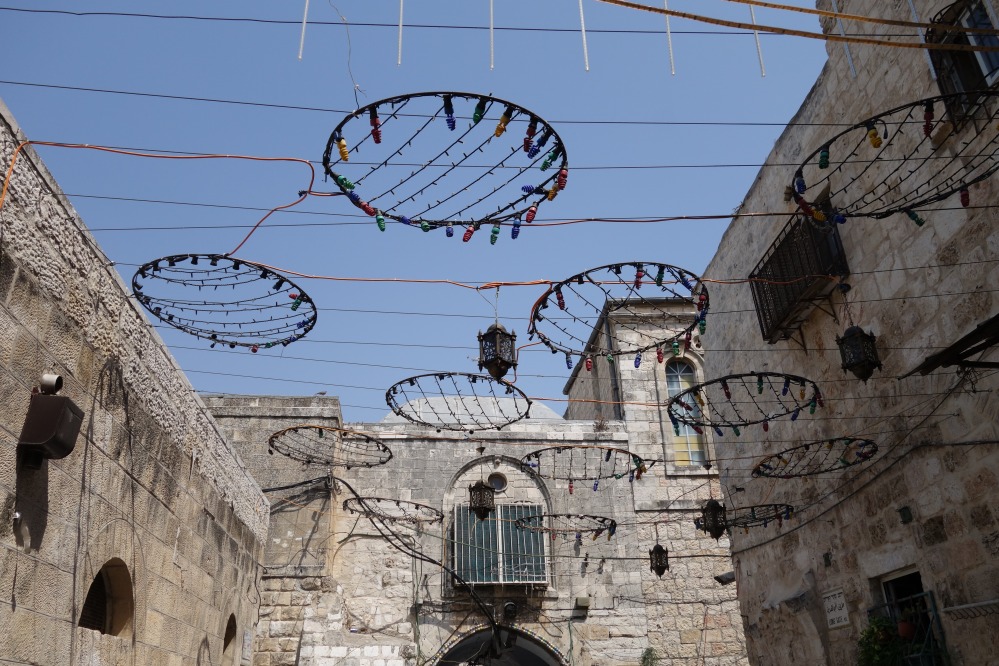
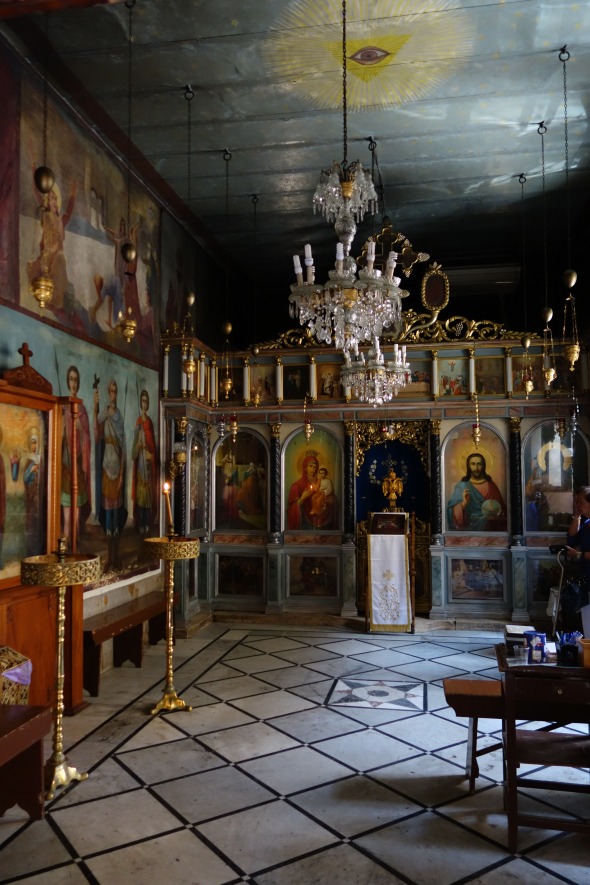
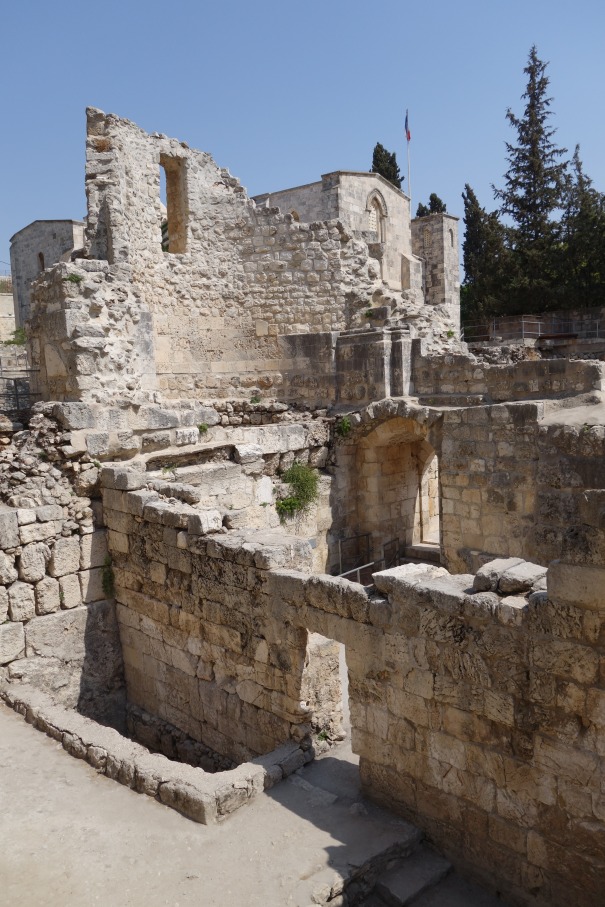
Carrying on a few paces down the road, you reach a nondescript set of steps leading up to an Islamic boys school, which contains the ruins of the Herodium, Herod the Great’s private palace and where Pontius Pilate was believed to have been staying when he tried Jesus. This location is key to the direction of the route of the Via Dolorosa, marked out by Byzantine pilgrims, however it seems more likely the Pilate would have stayed in the Citadel across town, meaning the whole route could potentially be going in the wrong direction towards the Holy Sepulchre! However historical fact aside; the 2nd station was where Jesus was said to have received the cross and the crown of thorns explaining the design incorporated into the Franciscan chapel.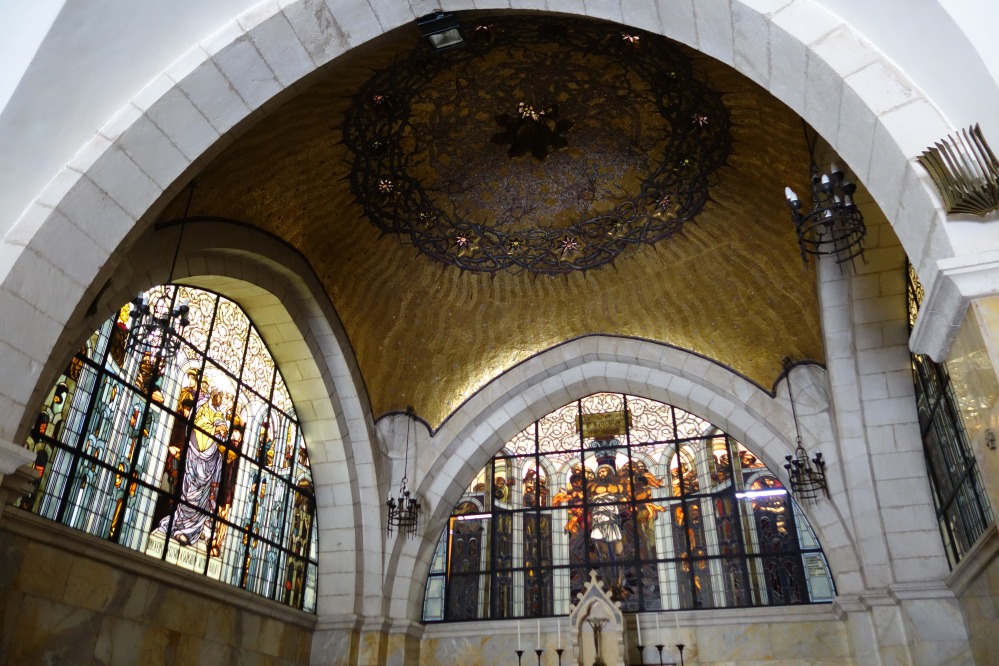
As you carry on down the road, which is not a straight line but weaves its ways through souqs and changes direction, including doubling back at one point you pass more of the stations, some with dedicated chapels and others with nothing but a small mark in the wall to demarcate them. The 9th station for example (where Jesus fell for the third time) is a cross on a pillar embedded in the wall of the Coptic church adjacent to the Holy Sepulchre.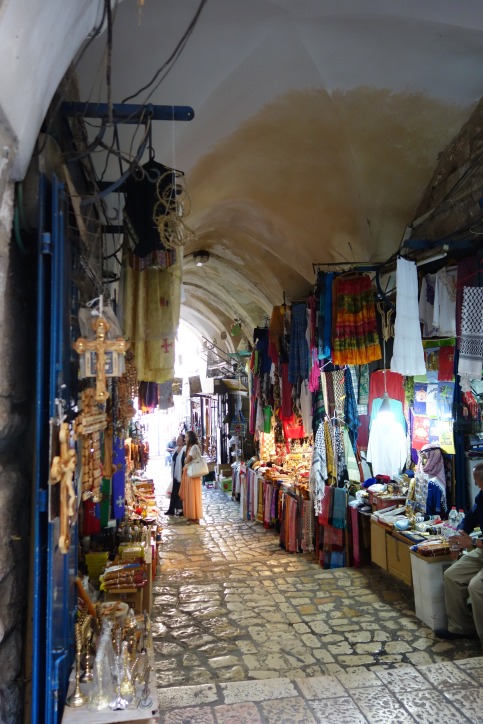
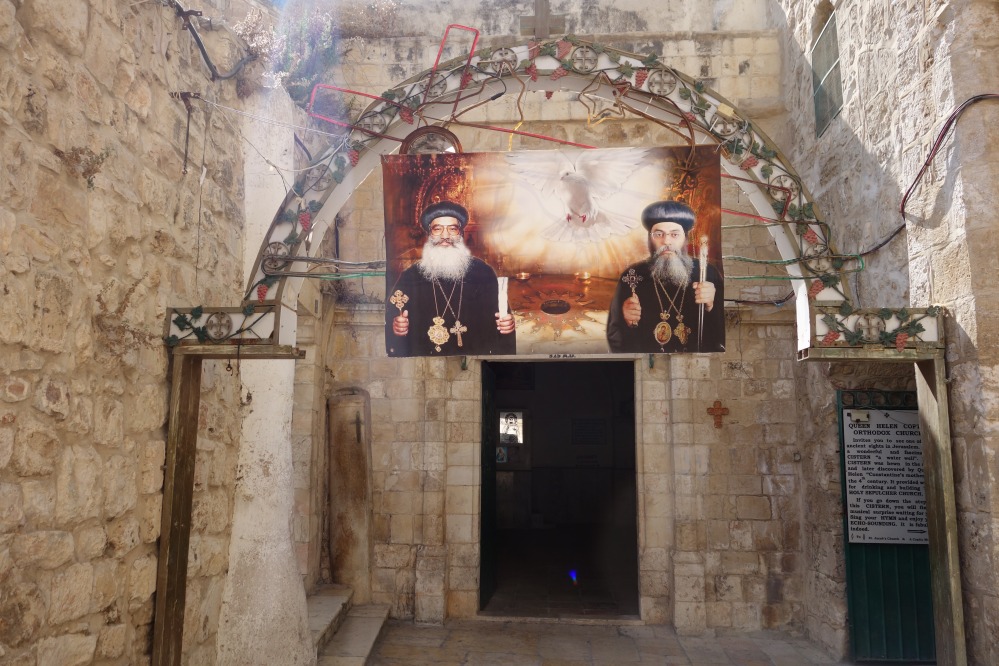
I eventually wound my way up some steps onto the roof of the Holy Sepulchre itself, home to some ramshackle plaster buildings that are in fact an Ethiopian monastery; the monks being evicted by the Copts when their churches split in 1959. Most tourists just pass through their small dimly lit chapel, but having done a course on Eastern Christianity, I found the chapel with its intricately carved wooden screen and paintings of the Queen of Sheba fascinating. The monk-caretaker of the chapel was surprised at a non-Ethiopian stopping there for so long, resulting in a rather bizarre 10 minute conversation. Bizarre namely because he spoke no English and me no Amharic.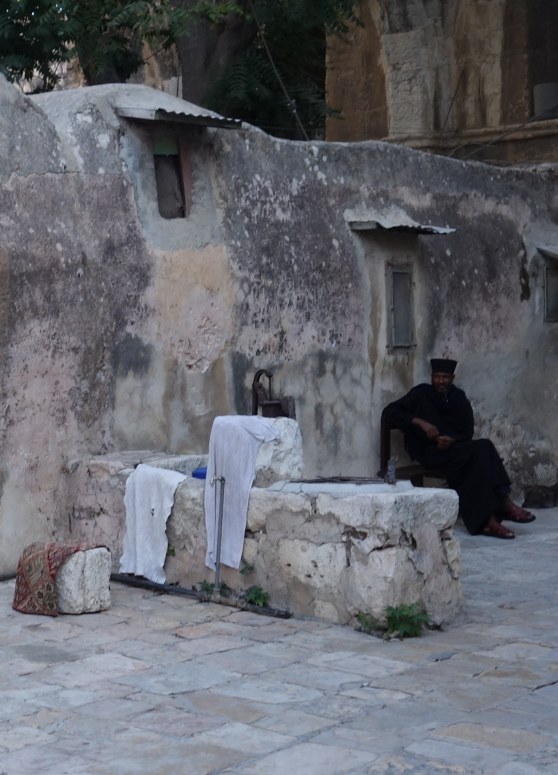
Inside the Holy Sepulchre itself are the last five stations of the cross. Immediately in the entrance is the Stone of Unction, where Jesus’ body was said to have been anointed, surrounded by pilgrims covering it in oil and kissing it. One problem – said stone dates from the 19th century. At the time of my visit to the Holy Sepulchre, the shrine of the tomb itself was covered in scaffolding, making this dark atmospheric church full of nooks and crannies each housing a different Christian denomination feel even more chaotic. Every niche, chapel and lantern is owned by one of the Armenians, Franciscans, Copts or Orthodox that have a share in maintaining the church, and when this status quo is not maintained thing can turn physically violent (see this bizarre video), explaining why a ladder which no denomination claims ownership of hasn’t been moved for centuries!
The site of the crucifixion itself is undoubtedly the most atmospheric, hung with endless lanterns, and with a shimmering silver depiction of the crucifixion, smelling strongly of incense and crowded with pilgrims waiting to kiss the Calvary rock on which the crucifixion happened. Visiting the Holy Sepulchre (although the Protestants propose another site, far outside the city walls known as the “Garden Tomb”) was also surreal. The pilgrims in front of me had been spending too long in the tiny space to by the time I entered, an irate Greek Orthodox priest gave you a few seconds before banging a door handle and shooing you away. The Holy Sepulchre is not exactly a place for peaceful contemplation to put it mildly.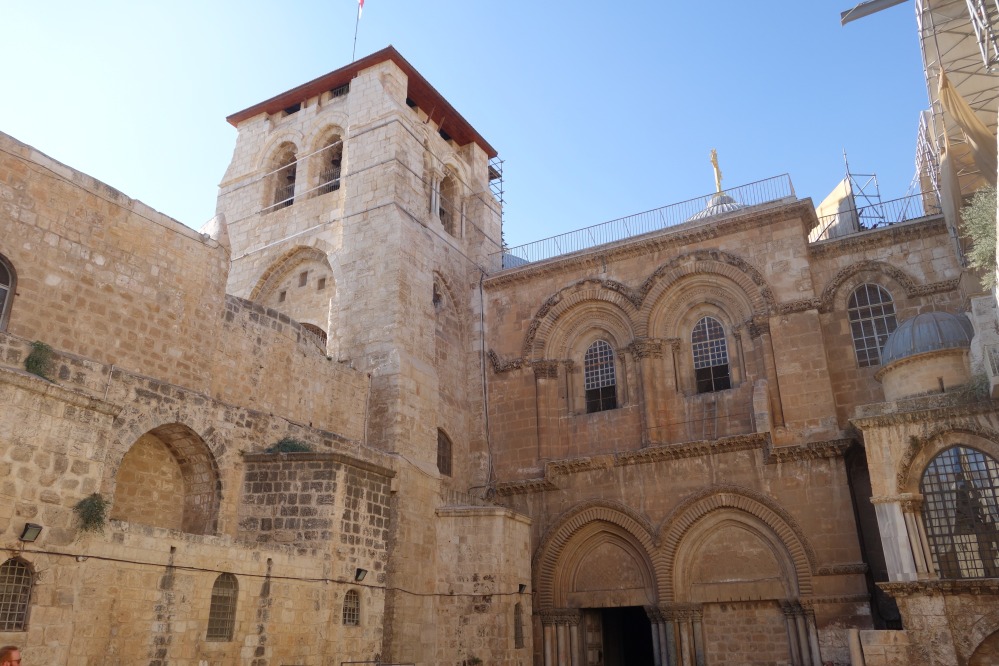
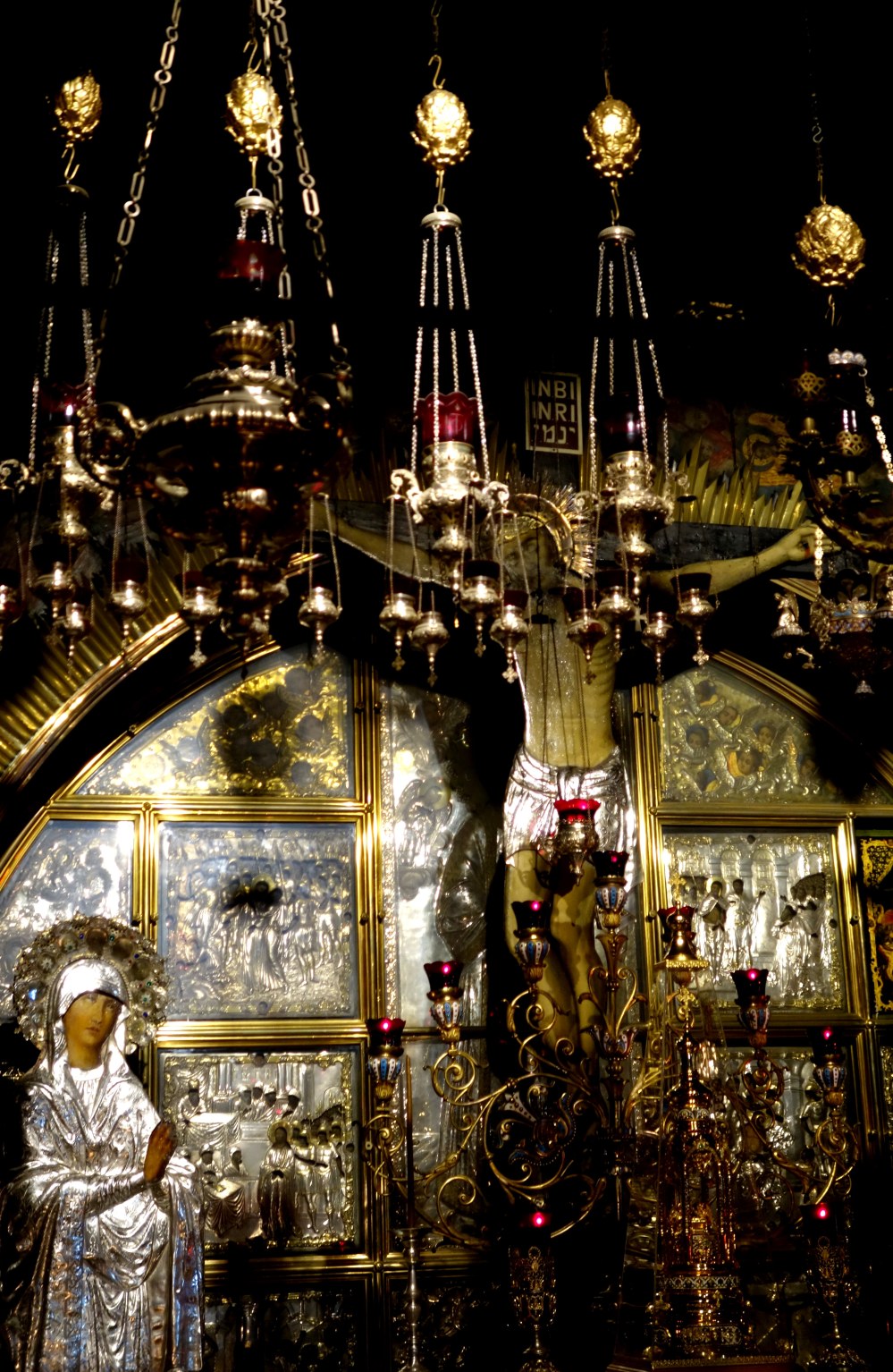
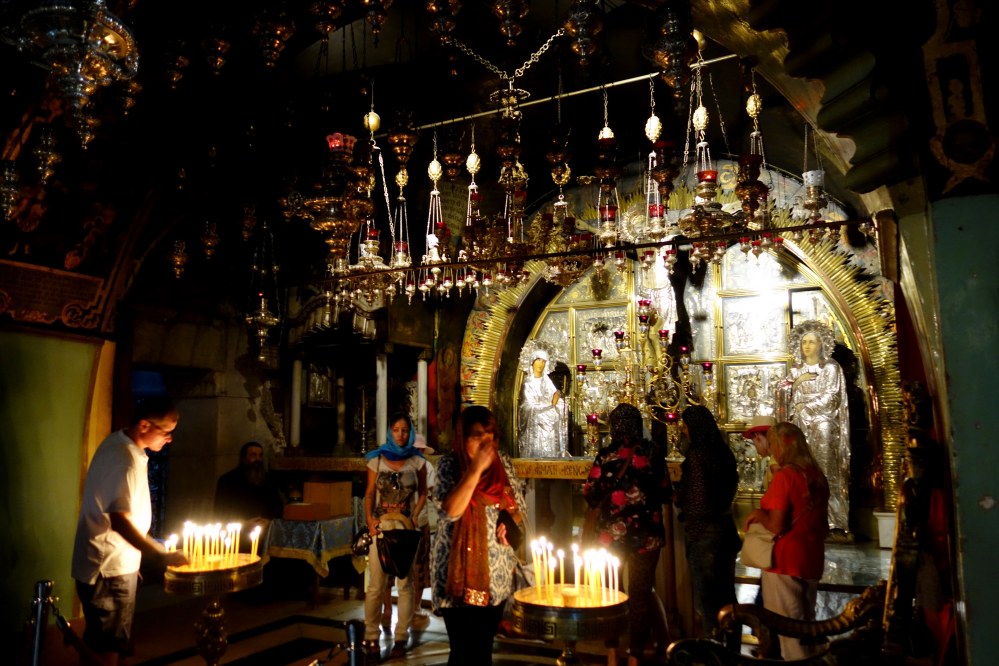
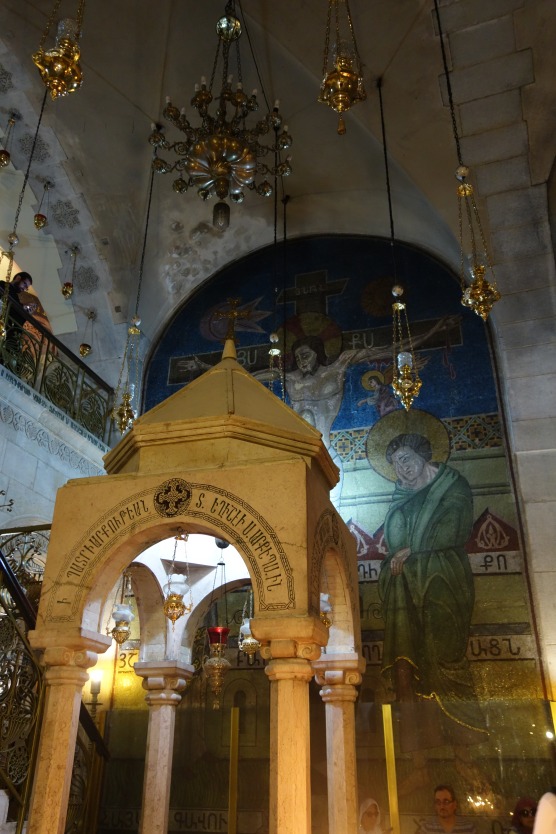
Having had an enjoyably bizarre and meandering walk along the Via Dolorosa, I eventually headed into the throngs of pedlars of religious kitsch and Palestinian shoppers back to my current home. A few days later on the Friday, I joined the weekly Franciscan procession along the Via Dolorosa. Accompanying the procession is even an Arab Jerusalamenite with a fez and a silver whip (used to direct pilgrims and passers-by based on Ottoman tradition and not actually used). However I personally preferred travelling the path of the Via Dolorosa on my own than being hurried along.
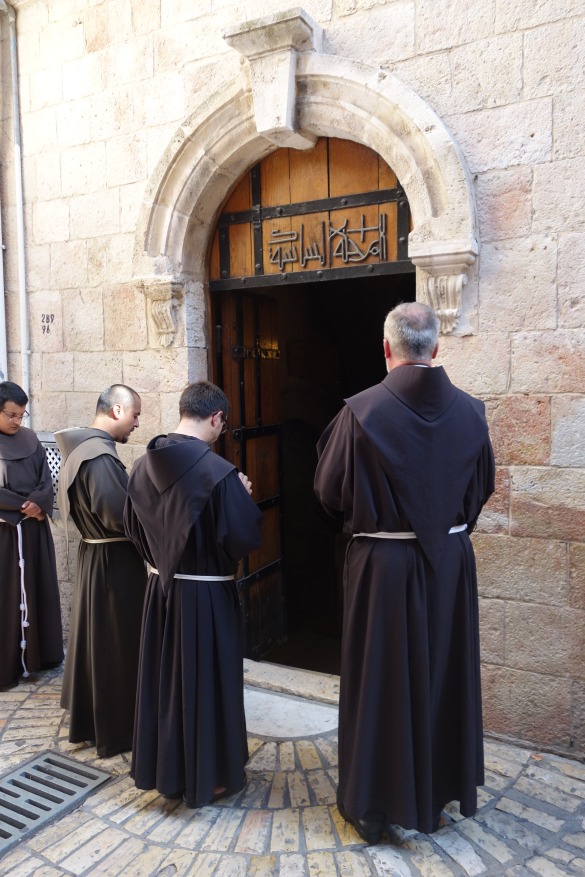
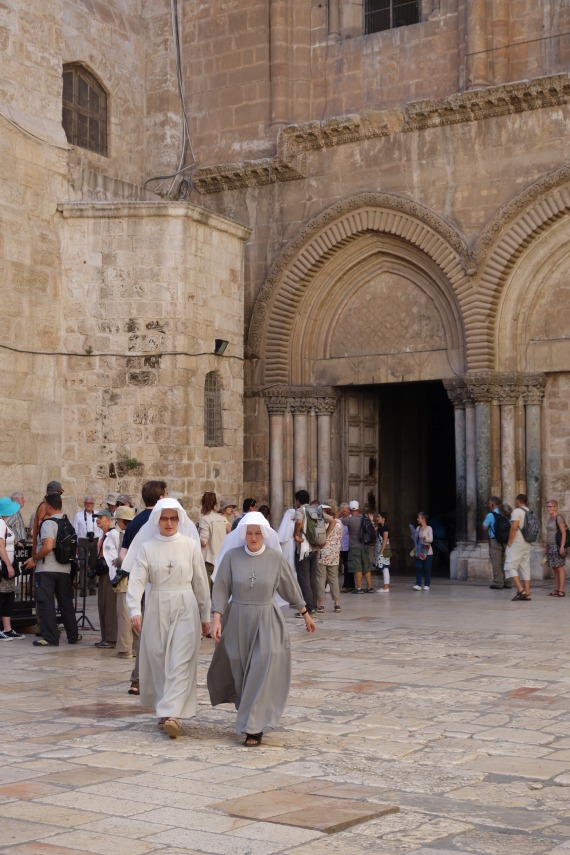
One Comment Add yours